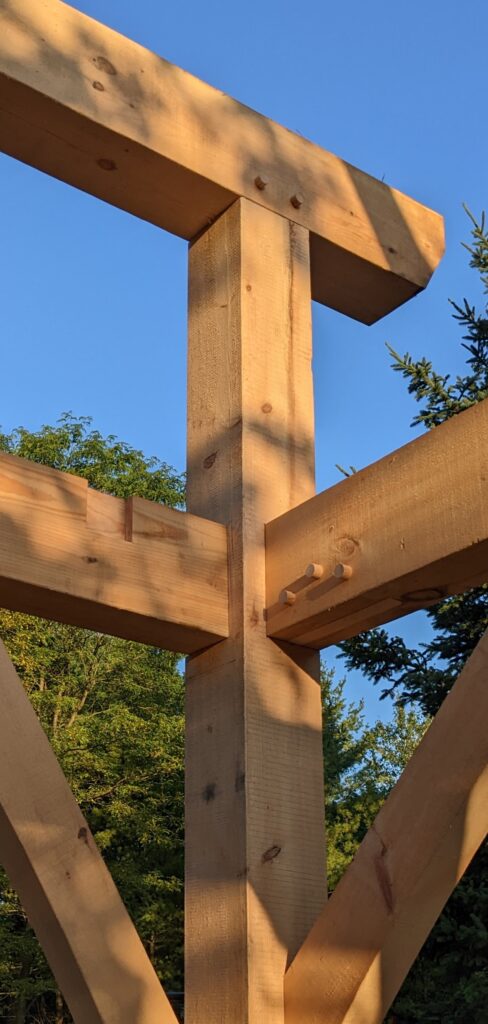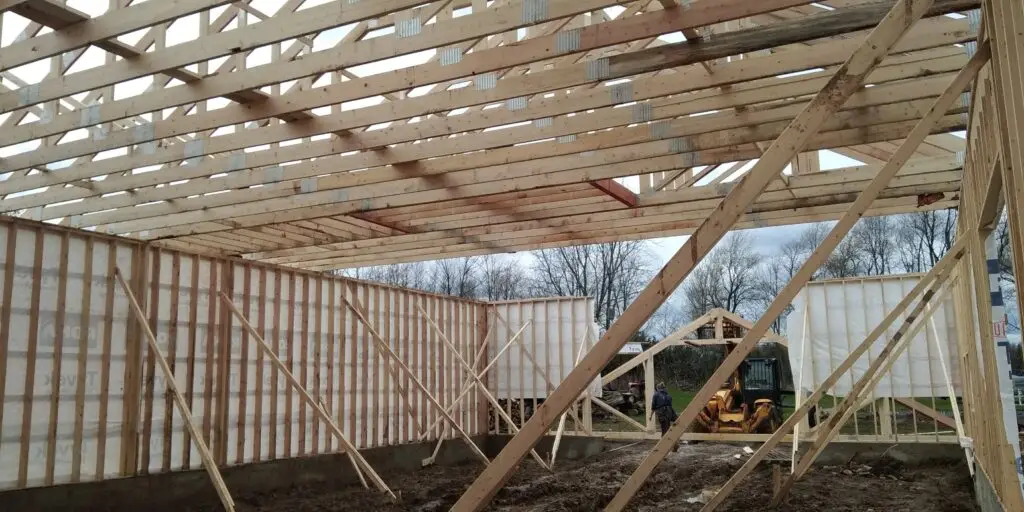
Timber Frame – Timeless Timber Carpentry
Stick Framing versus Timber Frame:
In the realm of construction, two prominent methods stand out: traditional stick framing and timber frame construction. Both have their unique characteristics, advantages, and applications. In this article, we’ll talk about the differences between these two techniques, exploring their structural integrity, environmental impact, cost considerations, and aesthetic appeal.
Traditional Stick Framing:
Definition: Traditional stick framing involves assembling a building’s frame using individual pieces of lumber, typically 2×4 or 2×6 studs, arranged in a grid-like pattern. This method has been the standard for residential construction in North America for decades.
Structural Integrity: Stick framing provides flexibility in design and allows for easy modifications during construction. However, its reliance on numerous individual pieces can potentially lead to inconsistencies in structural integrity if not executed with precision. It’s joinery is dependent on many steel fasteners which may deter the purists in carpentry.
Environmental Impact: The production of lumber for stick framing requires substantial energy and resources. Additionally, the frequent use of nails and other fasteners contributes to waste generation. However, advancements in sustainable forestry practices and the availability of certified lumber options aim to mitigate these environmental concerns.
Cost Considerations: Stick framing is generally more affordable upfront compared to timber frame construction due to the widespread availability of lumber and the familiarity of construction crews with the method. However, factors such as material quality and labor costs can significantly influence overall expenses.
Aesthetic Appeal: Stick framing allows for a wide range of architectural styles and finishes, making it suitable for various design preferences. However, the visible presence of studs and framing elements may not appeal to those seeking a more rustic or exposed aesthetic.
The Spruce – Traditional Stick Framing: https://www.thespruce.com/traditional-stick-framing-1822296
Timber Frame Construction
Definition: Timber frame construction involves crafting a building’s frame using large, solid wood beams, known as timbers, which are joined together with mortise and tenon joints and secured with wooden pegs. This method has ancient origins and is celebrated for its durability and aesthetic appeal.
Structural Integrity: Timber frame construction offers exceptional strength and stability, as the interconnected timbers distribute loads efficiently throughout the structure. This inherent robustness often results in buildings that can withstand the test of time.
Environmental Impact: Timber frame construction utilizes renewable and sustainable building materials, promoting environmental conservation. Additionally, the longevity of timber structures can contribute to carbon sequestration, further enhancing their eco-friendly credentials.
Cost Considerations: While timber frame construction may entail higher upfront costs due to the craftsmanship involved and the price of premium-grade timbers, it can offer long-term savings in terms of energy efficiency, maintenance, and durability.
Aesthetic Appeal: Timber frame buildings exude a timeless charm and warmth, with the exposed wooden beams adding character and visual interest to interior spaces. This construction method is particularly favored for rustic, traditional, or contemporary designs seeking a distinctive architectural statement.
Timber Frame HQ – What is Timber Frame Construction?: https://timberframehq.com/what-is-timber-framing/
Conclusion
Traditional stick framing and timber frame construction each have their merits. Stick framing is prized for its cost-effectiveness and versatility, while timber frame construction offers unparalleled strength, sustainability, and aesthetic allure. Ultimately, the choice between these methods depends on factors such as budget, design preferences, and long-term objectives. By understanding the distinctive attributes of each approach, builders and homeowners can make informed decisions that align with their vision and priorities.

Traditional Stick Framing – Timeless Timber Carpentry